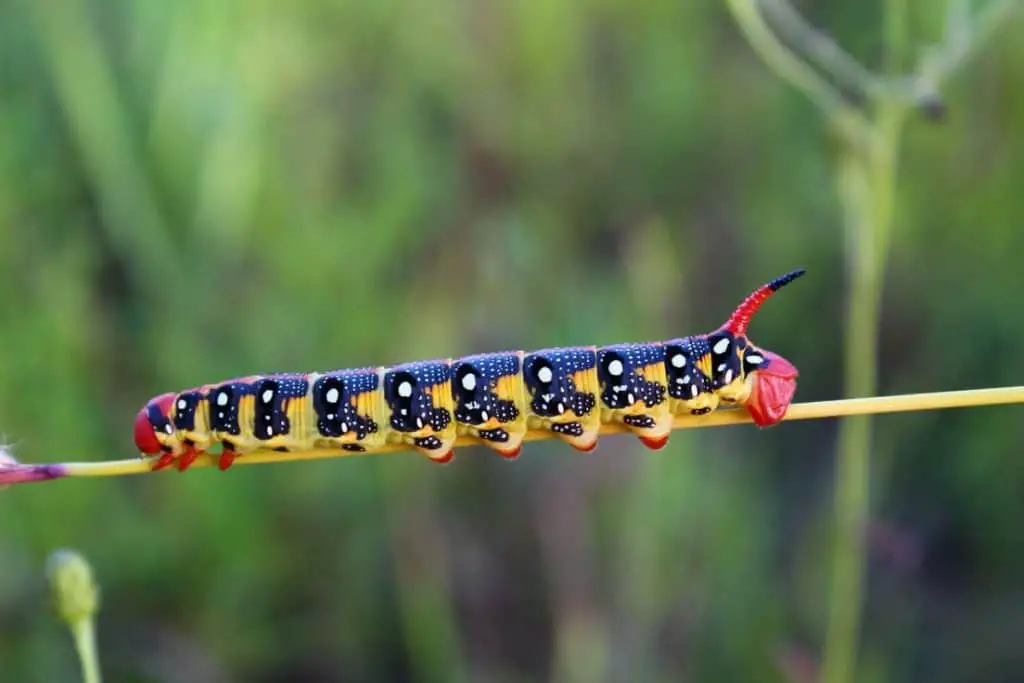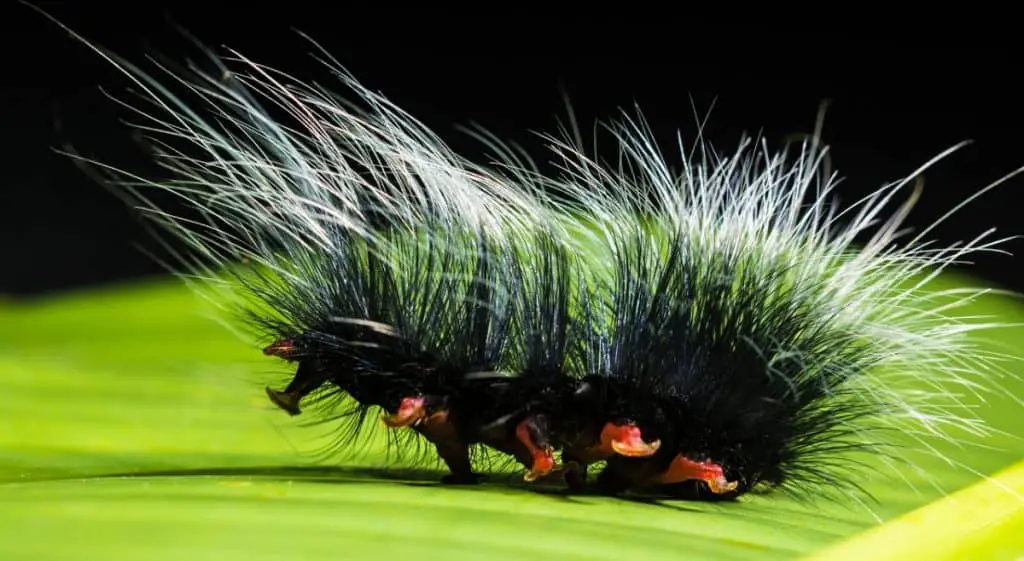Caterpillars are slow-moving insects and are prey to other animals, especially birds. Caterpillars have developed a range of defences to spot them from being eaten.
Caterpillars come in different sizes, shapes, and colours and all of these help them defend themselves against predators. Some species will hide inside plants, shrubs, trees, and bushes, while others will construct webs or strong silk bags. Camouflage plays a big part in caterpillar’s survival, although some develop bright colours to warn predators. Odours, poisons, and venoms are all used to protect some species of caterpillars.
Caterpillars have some excellent ways of staying alive, and although they may look defenceless, they can cause many problems for animals preying on them.
Did you know that seals are semi-aquatic? Find out why here

Hiding in plain sight
There are over 180,000 species of caterpillars, and they come in all shapes and sizes. Many of them deal with predators by staying out of sight. They spend their lives inside the roots, seeds, galls, and stems of plants.
Larger caterpillars also live their lives inside trees and plants. They can live in tree trunks or roots, such as the ghost moth larvae of the carpenter moths bore into tree trunks.
Bagworms stay out of the sight of predators by making bags where the larvae and females live. The constructions are made of silk, sand, twigs, and leaves. These can be extremely tough and do not tear easily, giving them extra protection.
The fall webworm is a caterpillar that makes webs that can envelope whole branches. The webs are made of silk, and they manage to feed while inside the web. They make sure there are enough leaves in the web to feed on and will extend the web downwards as needed. Once they are fully grown, the caterpillars drop to the leaf litter on the ground, where they remain during winter.
Burying beetles bury entire animals. Find out why here
Camouflage
Many animals use camouflage to escape being eaten by predators, and caterpillars also employ this method of staying hidden. Many try to mimic their surrounding habitat, such as the looper caterpillars. The cabbage looper can mimic a cabbage exceptionally well, and it can be hard to tell that it is there. They can lie very still while hanging from the caterpillar by their hind claspers, looking like a plant part.
The larva of the swallowtail butterfly resembles a bird’s droppings with a white patch in the middle of their dark bodies, something that is also seen in the alder moth.
Did you know there are 6 butterfly families? Find out what they are and how to identify them
Looking and smelling dangerous
Some animals look mean, and although it is difficult for a caterpillar to pull this off, some manage it. A hawkmoth caterpillar has what looks like eyes on its body. When disturbed, the caterpillar will draw its head in to expose the ‘eyes.’ This can startle the predator, causing a bird to fly away, leaving them safe.
Some caterpillars not only use their colours and patterns to scare away predators but also their smell. Some caterpillars, such as European puss-moth, can produce an irritant from glands on the thorax. The formic acid is its last line of defence against predators that aren’t deterred by the bright red filaments at the end of their abdomen. The variable oakleaf caterpillar also produced formic acid from glands.
Swallowtail caterpillars also release an odour from a forked tongue-like structure called the osmeterium on the thorax. The smell is enough to put off parasites from latching onto them.
Do you know how seals breastfeed? Find out here in this article I wrote

Do not touch hairy caterpillars
I was taught not to handle hairy caterpillars at an early age, and I still remember the skin rash that holding one caused. I was lucky that it only irritated the skin because some hairy caterpillars can cause more problems.
Some of the symptoms created by a hairy caterpillar can be very severe. Hairy caterpillars have urticating hairs, which many plants and tarantula species also use.
Urticating hairs usually are a different colour from the rest of the caterpillar, which should be heeded as a warning. There are two main types of urticating hairs. Some hairs can irritate when they break off and get lodged into the skin, and some discharge venom into the attacker.
The venomous hairs are hollow, connected to poison glands at their base. The caterpillar of the giant silkworm moth can inject venom that can be life-threatening to humans. Other caterpillars can cause problems with the skin, but some can be dangerous to the respiratory tract and eyes. The Venezuelan emperor moth can cause haemorrhaging as it injects an anti-coagulant into the blood.
Do you know how and why locust swarms form? Find out in this article I wrote
Brightly coloured can mean danger
Caterpillars come in all different colours, and the colours can be used to scare away predators much in the same way that poison-dart frogs do. Many brightly coloured caterpillars contain toxins.
Predators need to learn the association that some colours are unpleasant, and bright colours are often employed to warn them away.
Many caterpillars have colours as warnings, such as black and yellow, known throughout nature as poisonous. Bees, wasps, fire salamanders, and the Texas coral snake all use these colours to warn others away from them. Even if they are not poisonous, these colours are often used to give the illusion that they are, saving them from a predator’s bite. Burnet moths are black and yellow and can produce hydrogen cyanide.
The black and yellow brush-footed caterpillars do not create their toxin. However, they can store the heart toxins from their food plants, such as milkweed and pass them on through metamorphosis.
Did you know there is an animal that lives forever? Find out more here

